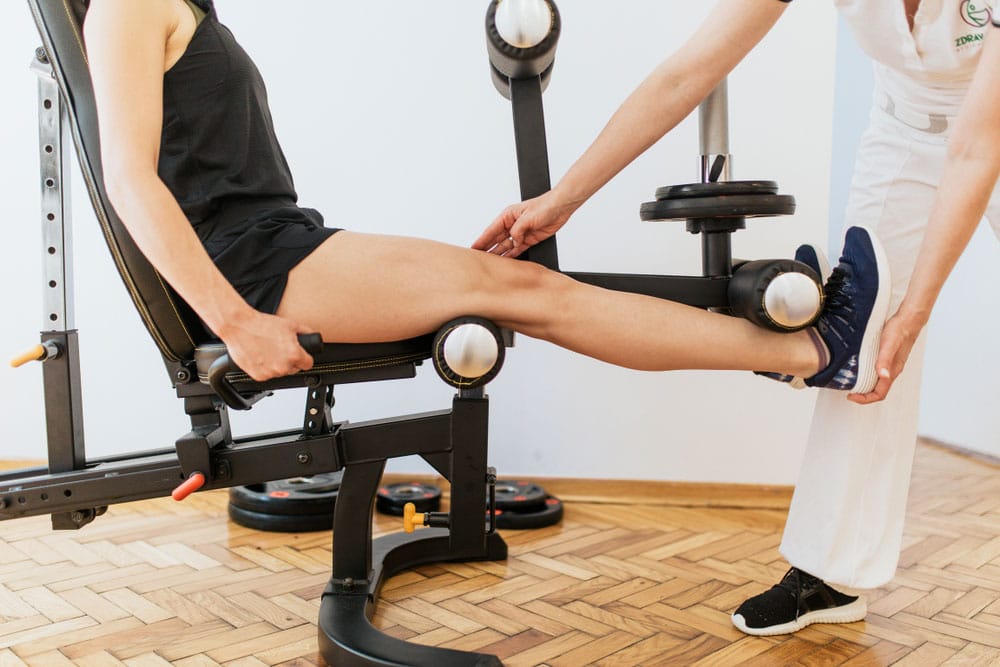Ah, knee replacements! Nobody wants to go through that ordeal if they can avoid it, right? Having a surgeon open your leg and replace a major joint might seem like a walk in the park but it’s a big deal! Even after all the poking and prodding, it takes a full year before you’re really reaping the full benefits of a knee replacement. No running, no jumping, no high-impact exercise. And even if everything goes perfectly, you might still end up dealing with swelling, numbness, or other aches and pains as you recover.
Strong Quadriceps Muscles Reduce the Risk of Knee Replacement
But is there a way to avoid knee surgery? A groundbreaking new study reveals that stronger quadriceps muscles can help people avoid total knee replacement surgery. This study, led by Dr. Upasana Upadhyay Bharadwaj at the University of California, San Francisco (UCSF), provides robust evidence that building quad strength relative to hamstring muscles significantly reduces the likelihood of needing a knee replacement. And that should be music to your ears if you have arthritic knees!
Knee osteoarthritis is a common condition that afflicts millions of adults worldwide. Although it can cause only minor discomfort in some cases, it can also lead to persistent pain and disability for some arthritis sufferers. It makes it hard to enjoy life to its fullest.
For severe cases, total knee replacement is the only option for restoring quality of life and a functional knee. However, surgery carries risks, from nerve damage to infection to the risks of anesthesia. But this new study sheds light on the importance of balanced leg muscles, suggesting a potential path to protecting your knees, so you’re less likely to have surgery or experience debilitating knee pain in the future.
Strong Quads Are Your Friend
Using advanced MRI technology, the researchers closely analyzed thigh muscle volume in over 130 research participants. The subjects had varying degrees of knee arthritis and symptoms such as joint pain and reduced function. The researchers noted that individuals with a higher ratio of quadriceps to hamstring muscle volume were less likely to require knee replacement surgery. So, strong quads are your ally for healthy knee joints.
The researchers took it to the next level to ensure precision. They tapped into the power of deep learning – an advanced form of artificial intelligence. The AI rapidly performed complex muscle segmentations and volume calculations far faster than humans could, making their assessments of muscle strength more accurate. So, the data they gathered provides convincing evidence that maintaining a healthy ratio of quad to hamstring strength is ideal for the health of your knee joints.
Maximizing Quad-to-Hamstring Ratio When You Train
You may have heard that a ratio of quad to hamstring strength of 3:5 is optimal. This corresponds to your hamstrings being 60% stronger than your quads. Yet this study, along with other more recent research, suggests that a 1:1 ratio of quad to hamstring strength may be best for knee health and for preventing sports injuries.
As the hamstring-to-quad ratio approaches one, the hamstrings have a greater capacity to dynamically stabilize the knee joint, which may also help prevent ACL and other knee injuries. Keep in mind that this guideline is supported for active and athletic populations and may not apply to people who are sedentary.
The standard for measuring the hamstring-to-quad ratio is isokinetic dynamometry. Other methods include isometric testing and handheld dynamometry.
Balance Your Lower Body Training
The key is to Here are some tips for maintaining balance between your hamstrings and quadriceps when you train:
- Exercises like deadlifts, good mornings, and Nordic curls target the hamstrings directly. Mix these into your routine. Start by using lighter weights and work up to heavier weights and greater volume.
- Make sure you’re also doing quad-focused exercises, like lunges and squats for balance.
- If you run or cycle, you’re getting a lot of quad work. Balance it out with hamstring TLC. The quads hog the spotlight in those activities, so the hamstrings need a little extra attention.
- Give your hamstrings a day to recover after intense training sessions. Give your lower body at least 48 hours of recovery after a workout.
Other Tips for Keeping Your Knees Healthy When You Train
Here are general tips for protecting your knees and keeping them healthy when you train:
- If it causes discomfort, limit high-impact exercises that involve jumping or switching directions.
- Build up your activity level gradually over time. If you experience knee pain, modify, or substitute another exercise.
- Be attentive to your form.
- Wear footwear that supports your feet and has cushioning to soften the impact on your joints.
- Ask your doctor whether orthotics or a knee brace would be of benefit to you.
- If you experience knee discomfort after a workout, apply an ice pack to reduce inflammation and swelling.
Conclusion
The conclusions provide actionable guidance for improving knee health. Targeted quadriceps strengthening exercises could help reduce reliance on surgery. As the researchers in the study explain, it’s not just about building strength individually in muscle groups. It’s also about improving the balance between quads and hamstrings. This evidence-based insight empowers both patients and physicians.
While the focus was on arthritis sufferers, these findings likely apply to everyone, even those with healthy knees. Maintaining proper quadriceps and hamstring balance through appropriate fitness regimens may help you avoid knee troubles later in life and help you stay out of the surgical suite. By comprehending the interconnectedness of our muscles, we open new possibilities for sustaining joint health as we age.
References:
- Paravlic AH, Meulenberg CJ, Drole K. The Time Course of Quadriceps Strength Recovery After Total Knee Arthroplasty Is Influenced by Body Mass Index, Sex, and Age of Patients: Systematic Review and Meta-Analysis. Front Med (Lausanne). 2022 May 25;9:865412. doi: 10.3389/fmed.2022.865412. PMID: 35692543; PMCID: PMC9174520.
- Ruas CV, Pinto RS, Haff GG, Lima CD, Pinto MD, Brown LE. Alternative Methods of Determining Hamstrings-to-Quadriceps Ratios: a Comprehensive Review. Sports Med Open. 2019 Mar 25;5(1):11. doi: 10.1186/s40798-019-0185-0. PMID: 30911856; PMCID: PMC6434009.
- Lefever C. Hamstring to Quadriceps Strength Ratio – [P]rehab. [P]rehab. Published August 22, 2022. Accessed February 21, 2024. https://theprehabguys.com/hamstring-to-quadriceps-strength-ratio/
Related Articles By Cathe:
How Strength Training Could Lower Your Risk for a Knee Replacement
Can Exercise Reduce Chronic Joint Pain due to Osteoarthritis?
What’s the Best Type of Exercise to Prevent Knee Osteoarthritis?
How Your Joints Age & What You Can Do to Slow It Down
Are the Joint Aches You’re Experiencing Due to Arthritis?
When Your Knees “Crack” and “Pop” What Does It Mean?
What Impact Does Strength Training Have on Arthritis?


